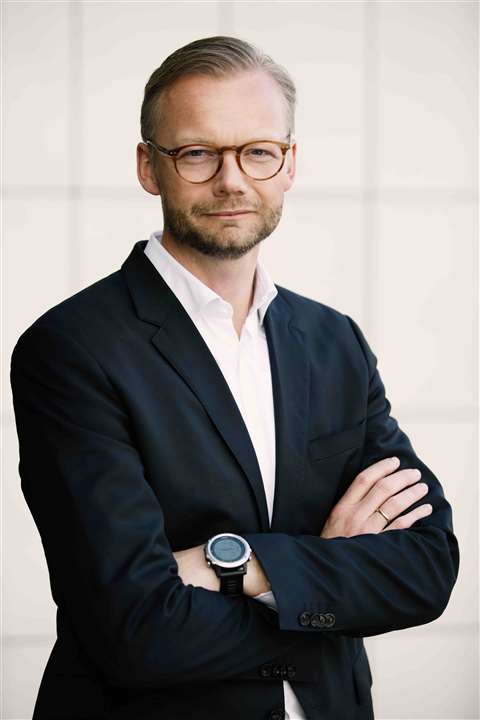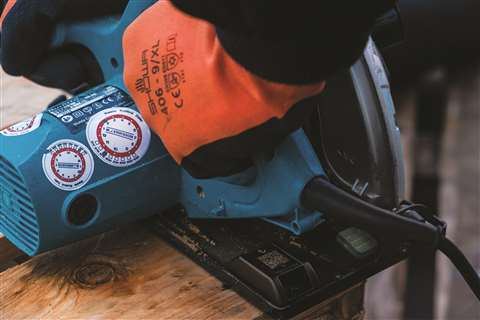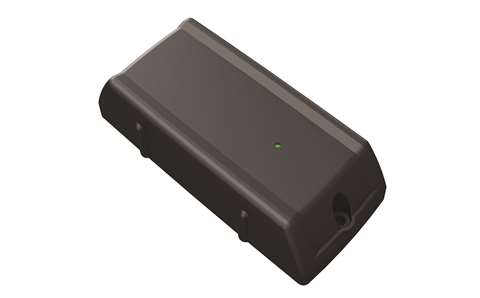Interview: Trackunit CEO on construction’s digital transformation
10 January 2023
There has never been more data in the construction industry than there is today and making intelligent use of it has never been more important. Andy Brown speaks to Trackunit CEO, Soeren Brogaard, about the future of data and crowdsourcing connectivity.
During interviews I’m always listening out for an interesting and snappy soundbite that I can use in the feature.
 Soeren Brogaard, CEO, Trackunit. (Photo: Trackunit)
Soeren Brogaard, CEO, Trackunit. (Photo: Trackunit)
Most of the time you might get three or four statements that really hit the mark; if you are unlucky and the interview is dry and formal there might be none.
With Soeren Brogaard, CEO of Trackunit, if we weren’t into double figures then we must have been close.
Trackunit produces products and services with the stated goal of ‘eliminating downtime’, of making construction more efficient and productive through the intelligent use of data.
More than 150 OEMs use their platform and the ability to take data from so many different sources and present them on one platform in a clear and meaningful way is a major reason, says Brogaard, why the company is so much larger than their nearest competitor.
Brogaard comes across as somewhat intense during the interview, but enjoyably so – you could easily imagine him on the board of Google or Microsoft.
Business has been good for the Denmark-based software company, with sales increasing by 20% in 2022.
The amount of data that is produced in the construction industry has rapidly increased over the last decade. Trackunit itself gather around 1.9 billion data points every single day.
“What’s important is that the data can never slow down the system. You need an endless scalability while still being extremely careful around cybersecurity, device protection and making sure that the right data gets to the right people and that no data is ever compromised,” he comments.
“We spend around 40% of our total operating expenditure on product and Research and Development, which is a very big number compared to other businesses – it is high even in a software context.”
Construction’s technology journey
There’s no doubt that over the last decade construction has made great strides on its technology journey. However, it can also be argued that these advances have come from a low level.
When it comes to the financing of construction technology, Brogaard says that this is also the case.
“If you measure it on investments in technology in percentages, it’s high, but we are coming from a very low number.
“If you look at venture capital and private equity as one way of looking at the tech scene in construction then, relatively speaking compared to FinTech (financial technology), it is still at a very low level even though it’s improving.
“I think it’s at its infancy; you don’t see a lot of startups that are really making their mark,” he says.
He also makes the comment that the construction sector has a 13% incremental IT spend increase, which ranks the sector as the fifth highest incremental spender.
Again, this is from a low level but shows that investment is being made. Talking about the exhibitors at Bauma Munich he says that now, “you can’t really be in this industry unless your product provides data.”
Even though investment is increasing it doesn’t necessarily follow that this directly leads to increased productivity and efficiency, as shown by a study Trackunit conducted earlier this year across OEMs, contractors and rental companies.
 Brogaard believes that the Kin is a very powerful mechanism for construction to avoid downtime. (Photo: Trackunit)
Brogaard believes that the Kin is a very powerful mechanism for construction to avoid downtime. (Photo: Trackunit)
“Roughly speaking, across all three segments, 50% have the people to execute the strategy, which is itself a big issue.
“And then 10% of the total have been able to deliver impact and outcomes – when they start seeing their digital strategy actually impacting the business.
“Only 10% in the end can actually justify and document an impact. I think that’s what we are up against. There’s strong intent in the boardroom, money is being dedicated, 50% have the people and the staff.
“But then only 10% are realising the impact. Why is that? That’s one of the things that we are asking.”
Digitally connected construction equipment
One of the most animated that Brogaard becomes during our conversation is when talking about the Kin.
Kin is an asset tracking system for small tools and attachments featuring a Bluetooth-enabled tag that can be attached to any piece of construction equipment.
The tag connects to Trackunit’s Go App, available for mobile devices, making it instantly discoverable within a range of up to 400m.
The CEO says that the new Bluetooth standard tripled the length of the signal, vastly improved battery life and also made it cheaper; this unlocked the true potential of Kin.
In simple terms, if a construction site has the Kin on machines and attachments then it creates a Bluetooth network, meaning that any piece of tagged equipment can be instantly located, potentially saving operators time tracking it down, as well as reducing theft.
“It’s a very powerful mechanism that allows our industry to start avoiding downtime for assets. No one else is doing that. No one else is putting infrastructure in place. We have gotten all our large customers and OEMs to buy into the idea,” he says.
“We are crowdsourcing connectivity across the entire network of Trackunit machines to create the largest Bluetooth network in the world. It’s a substantial shift in the way we think about connectivity.”
Is artificial intelligence the future of construction?
This is something which is available in the here and now. Looking to the future, Brogaard has previously spoken about what he calls ‘accelerated learning loops’ – basically, the concept that the more that artificial intelligence (AI) is used, the smarter it gets.
He says that the AI in 2D and 3D guiding systems are very helpful for construction, but the industry is a long way off ‘full’ automation.
“We are very far away from autonomous systems where AI can ultimately augment a human being… today, the data that we gather is mostly used for optimising within the existing business model.
“We are still early days on backloading this data and the use of the machines into the core R&D functions of OEMs so they can start using that data for creating better systems.”
Another issue is that construction sites are typically different from each other (unlike, say, in mining) and that this uncontrolled environment makes it harder for AI.
 Spot is a battery-powered telematics solution. (Photo: Trackunit)
Spot is a battery-powered telematics solution. (Photo: Trackunit)
However, Brogaard adds that, “clearly, AI is coming. AI is an element that we all have to be part of.
“I think you’ll see it on expensive machines where each little component just starts getting more and more utility, so you cannot misuse it. But doing it at large construction sites with multiple systems; I wish it would happen in our lifetime, but I doubt it.”
Construction’s digital transformation
Fully autonomous solutions might be a long way off, but what about the near future – where does Brogaard want the company to be by the time the next Bauma comes around in 2025?
“I’d expect us to continue with the 20% growth – I think that’s sustainable. I would be disappointed if that isn’t maintained in the years to come,” he says.
“I think you will see us keep investing heavily into the extendibility of the platform, driving more value-added services, and working even closer with our largest partners to find these nuggets in the data.
“There is no magic wand; it takes hard work from data scientists working inside the platform with the data.”
That there’s no ‘magic wand’ for data is just another one of the fantastically quotable comments from the CEO of the company that has data at its very heart.
STAY CONNECTED



Receive the information you need when you need it through our world-leading magazines, newsletters and daily briefings.
CONNECT WITH THE TEAM








